Watkins Glen State Park
- December 26, 2023
- 0 comment
Watkins Glen State Park is a captivating testament to the unrivaled beauty that nature can carve over centuries, located within the heart of New York’s Finger Lakes region Renowned for its awe-inspiring gorge, the park unfolds as a sanctuary of geological wonders, where Glen Creek has meticulously etched a deep and dramatic passage through the rugged landscape. As visitors traverse the stone paths and climb the staircases, they are enveloped by the sheer magnificence of 19 cascading waterfalls, each a testament to the persistent power of water over stone.
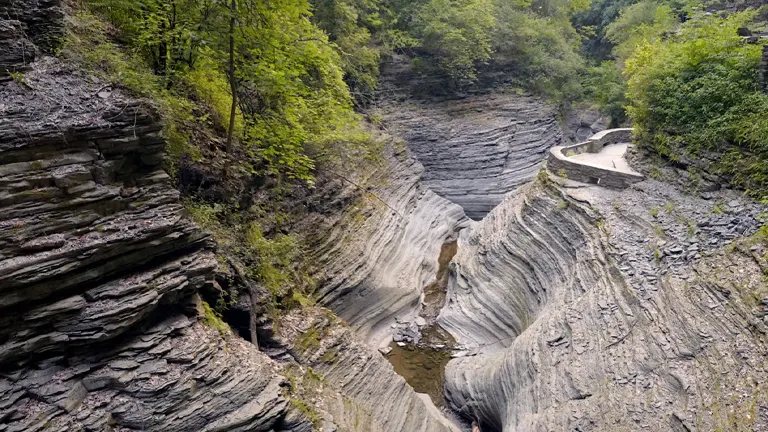
Encompassing 778 acres, the park invites exploration of its trails, from the elevated vantage points of the Southern Rim and Indian Trails to the intimate proximity of the Gorge Trail along the stream. Watkins Glen State Park, managed by the New York State Office of Parks, Recreation and Historic Preservation, not only enchants with its natural allure but also reflects a rich history dating back to its opening in 1863. Today, it stands as a cherished destination where visitors from far and wide immerse themselves in the wonders of the great outdoors and the enduring legacy of this geological masterpiece.
Characterizing Features of the Watkins Glen State Park
- Gorge Trail and Waterfalls: The crown jewel of Watkins Glen State Park is undeniably the Gorge Trail, a scenic 2-mile pathway that winds alongside Glen Creek. This trail, adorned with over 800 stone steps, takes visitors on an enchanting journey, guiding them beneath, beside, and behind 19 breathtaking waterfalls. The cascading waters create a symphony of sights and sounds, making every step a captivating exploration of nature’s artistry.
- Geological Marvels: The park’s centerpiece is a 400-foot-deep narrow gorge, carved through rock by the persistent flow of Glen Creek. The geological features are a testament to the Ice Age’s impact on the region, with layers of sedimentary rocks, including soft shales, hard sandstone, and limestone, creating a stunning visual tapestry. The park’s three trails offer a closer look at the diverse rock formations shaped over millennia.
- Historical Significance: Watkins Glen State Park has a rich history dating back to its opening in 1863. Initially known as Watkins Glen State Reservation, it was privately operated as a tourist resort until 1906 when New York State took ownership. The park’s management transitioned to state control in 1911, and since 1924, it has been under the supervision of the Finger Lakes Region of the New York State Office of Parks, Recreation and Historic Preservation. The Civilian Conservation Corps played a significant role in enhancing the park’s infrastructure during the early 1900s.
- Acclaim and Recognition: Over the years, Watkins Glen has garnered national acclaim, securing its position as the third-best state park in the United States and the second-best attraction in all of New York State. This recognition is not solely attributed to the awe-inspiring gorge but also to the tireless efforts of individuals and organizations dedicated to making the park accessible and enhancing the visitor experience.
- Recent Renovations: In 2018, Watkins Glen State Park underwent extensive renovations initiated by New York State. These enhancements included the establishment of a new and improved Visitor Center, interpretive panels, educational areas, an observation deck near the gorge entrance, and a scale model of the gorge for visitors facing accessibility challenges. The renovations aimed to elevate the overall visitor experience and showcase the park’s natural beauty.
- Outdoor Recreation and Amenities: The park offers a range of outdoor activities, including camping, hiking, fishing, and cross-country skiing. With over 275 campsites, nine cabins, picnic areas, and pavilions, Watkins Glen provides a welcoming environment for families, nature enthusiasts, and those seeking a peaceful retreat. The park is equipped with amenities such as a pool, playground, showers, and a gift shop, ensuring a comfortable and enjoyable stay for visitors.
- Seasonal Variations: While Watkins Glen State Park is open year-round, it’s important to note that not all facilities are available at all times. The Gorge Trail, in particular, is closed from mid-October through late May due to winter conditions and ice. The seasonal changes add a dynamic element to the park, with each visit offering a unique perspective on the natural beauty that unfolds with the passing seasons.
History
Founded in 1863, Watkins Glen State Park holds a storied history woven into the fabric of New York’s Finger Lakes region. Initially known as Watkins Glen State Reservation, the park began its journey as a privately-run tourist resort until 1906 when it found a new home under the ownership of New York State. Managed initially by the American Scenic and Historic Preservation Society and later fully controlled by the state in 1911, the park has been under the stewardship of the Finger Lakes Region of the New York State Office of Parks, Recreation and Historic Preservation since 1924.
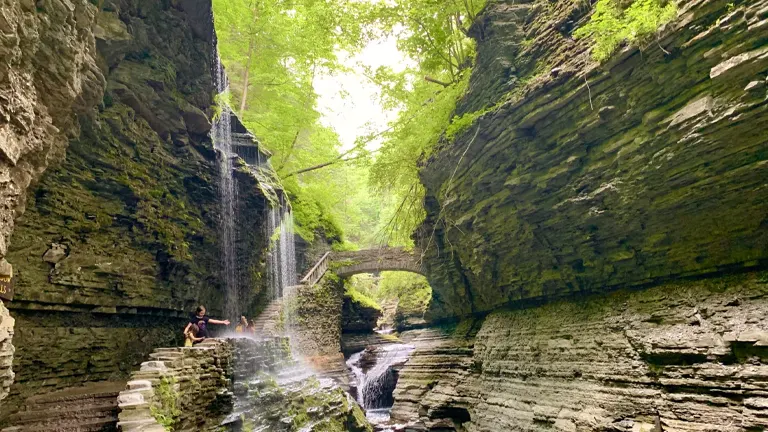
Throughout the years, Watkins Glen State Park has evolved, witnessing significant contributions from the Civilian Conservation Corps during the early 1900s, which played a pivotal role in enhancing the park’s infrastructure. Its historical significance extends beyond the geological marvels, encapsulating the spirit of conservation and a commitment to making nature’s wonders accessible to the public. Today, Watkins Glen State Park stands as a testament to the enduring beauty of its gorge, the resilience of Glen Creek, and the collective efforts that have preserved this natural gem for generations to come.
Importance in Conservation and Recreation of Watkins Glen State Park
Watkins Glen State Park, beyond its breathtaking natural beauty, holds paramount importance in both conservation and recreation. As a conservation stronghold, the park serves as a living testament to the preservation of geological wonders shaped over millennia. The gorge, carved by Glen Creek, unveils layers of sedimentary rocks, showcasing the delicate interplay between water and stone. The park’s history, marked by the involvement of the Civilian Conservation Corps in the early 1900s, underscores a commitment to safeguarding these natural treasures.
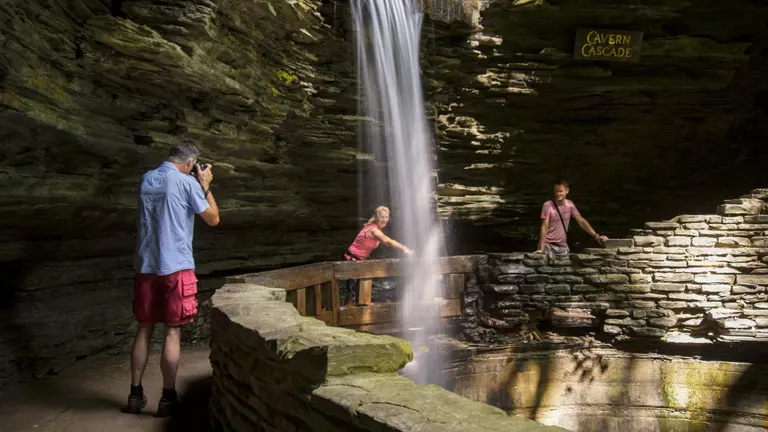
Simultaneously, Watkins Glen State Park plays a pivotal role in providing a sanctuary for outdoor recreation. Its well-maintained trails, camping facilities, and amenities offer visitors a chance to connect with nature through activities like hiking, camping, and fishing. By blending conservation efforts with recreational opportunities, Watkins Glen State Park not only invites exploration and appreciation of the natural world but also fosters a sense of stewardship, inspiring visitors to cherish and protect these pristine landscapes for future generations.
Unique Location of Watkins Glen State Park
Watkins Glen State Park is strategically positioned in the scenic Finger Lakes region of upstate New York. Specifically located south of Seneca Lake in Schuyler County, the park boasts a distinctive 400-foot-deep gorge meticulously carved by Glen Creek. Its geographical allure is underscored by the region’s glacial past during the Pleistocene era, where the movement of glaciers played a pivotal role in shaping the intricate landscapes.

This unique location showcases the park’s dramatic topography, featuring rugged cliffs and 19 cascading waterfalls along the creek’s descent. Embraced by sedimentary rocks dating back to the Devonian age, including soft shales, sandstone, and limestone, Watkins Glen State Park stands as a testament to the enduring forces of geological evolution. Its accessibility and well-maintained trails offer visitors an opportunity to immerse themselves in the remarkable natural beauty and rich geological history of this exceptional location.
Diverse Vegetation and Unique Plant Species:
- Hemlock Trees (Tsuga): Gracefully lining the trails and adding a sense of majesty to the landscape, hemlock trees are a prominent feature in Watkins Glen State Park. Their evergreen needles and dense canopies contribute to the park’s lush and verdant ambiance.
- Trillium (Trillium): During the spring, the forest floor comes alive with the delicate blooms of trillium. These native plants, with their distinctive three-petaled flowers, create a carpet of color, adding to the park’s biodiversity.
- Ferns (Various Species): The cool, moist environment of the gorge provides an ideal habitat for a variety of fern species. Adorning the rocky walls and damp crevices, ferns contribute to the park’s rich tapestry of greenery, particularly along the Gorge Trail.
- Wildflowers (Various Species): Watkins Glen State Park boasts a diverse array of wildflowers, each adapted to its specific niche within the ecosystem. From the vibrant hues of columbine to the subtle beauty of violets, these wild blooms paint the landscape with a spectrum of colors.
- Mosses and Lichens: Blanketing the rocks and adding texture to the geological formations, mosses and lichens thrive in the moist microclimates created by the waterfalls. Their presence underscores the pristine conditions of the park and contributes to its overall ecological health.
- Northern Red Oak (Quercus rubra): Towering among the canopy, the northern red oak is a dominant hardwood species in the upland areas of the park. With its distinctive lobed leaves, these trees provide shade and contribute to the park’s biodiversity.


Fauna:
- Eastern Red-backed Salamander (Plethodon cinereus): The moist and shaded environments of Watkins Glen State Park provide an ideal habitat for the Eastern Red-backed Salamander. These amphibians, with their distinctive red or orange stripe along their back, thrive among the rocks and leaf litter along the trails.
- White-tailed Deer (Odocoileus virginianus): Graceful and ubiquitous, white-tailed deer can often be spotted amid the park’s diverse vegetation. Their presence highlights the importance of the park as a habitat supporting various herbivores, contributing to the overall biodiversity.
- Red-spotted Newt (Notophthalmus viridescens): Watkins Glen State Park is home to the red-spotted newt, an eye-catching salamander species. These vibrant orange terrestrial juveniles can be observed in the wooded areas, while their aquatic counterparts, the red efts, inhabit the park’s moist habitats.
- Woodland Birds (Various Species): The diverse plant life in the park attracts a variety of woodland birds. From the melodious songs of songbirds to the rhythmic tapping of woodpeckers, the avian fauna contributes to the park’s vibrant soundscape, especially in the early morning hours.
- Raccoon (Procyon lotor): Nocturnal residents of Watkins Glen State Park, raccoons are often seen foraging in the underbrush. Their adaptability to different habitats within the park showcases the diversity of ecosystems supported by the varied vegetation.
- Eastern Chipmunk (Tamias striatus): Among the leafy undergrowth and rocky outcrops, the Eastern Chipmunk scurries about, utilizing the diverse vegetation for cover and foraging. Their presence adds a touch of animated charm to the park’s woodland environment.


Importance as a Wildlife Corridor and Habitat for Threatened Species

Watkins Glen State Park plays a vital role as both a wildlife corridor and a crucial habitat for threatened species within the diverse ecosystems of upstate New York. Serving as a connecting passage for various fauna, the park facilitates the movement of wildlife, allowing for gene flow and biodiversity maintenance. Its wooded areas, rocky outcrops, and lush vegetation create a mosaic of habitats that support a range of species. The park’s significance is further emphasized by its role in providing a refuge for threatened species, including amphibians like the Eastern Red-backed Salamander and the red-spotted newt. The diverse plant life and topographical features offer ideal conditions for these species to thrive. As a haven for both common and endangered wildlife, Watkins Glen State Park stands as a testament to the importance of preserving natural corridors and habitats to ensure the long-term survival of diverse and vulnerable species in the region.
Activities in Watkins Glen State Park for Visitors
1. Hiking
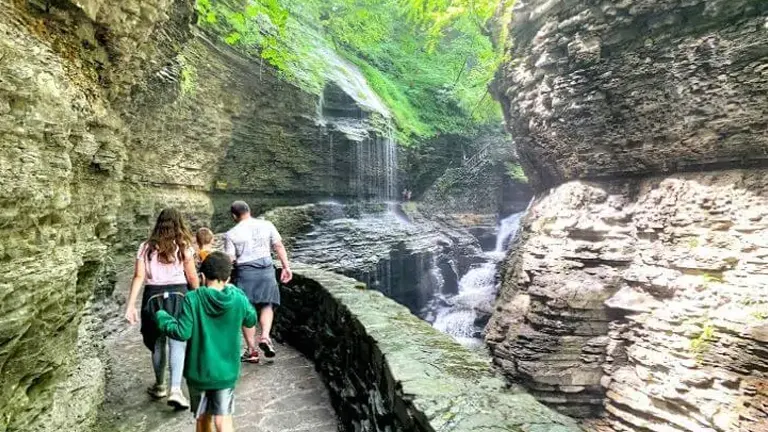
Watkins Glen State Park offers an extensive network of well-maintained trails, with the Gorge Trail being the highlight. Winding alongside Glen Creek and passing by all 19 waterfalls, this trail provides a breathtaking and immersive hiking experience. The diverse terrain and scenic vistas make it a favorite among nature enthusiasts and hikers of all skill levels.
2. Camping
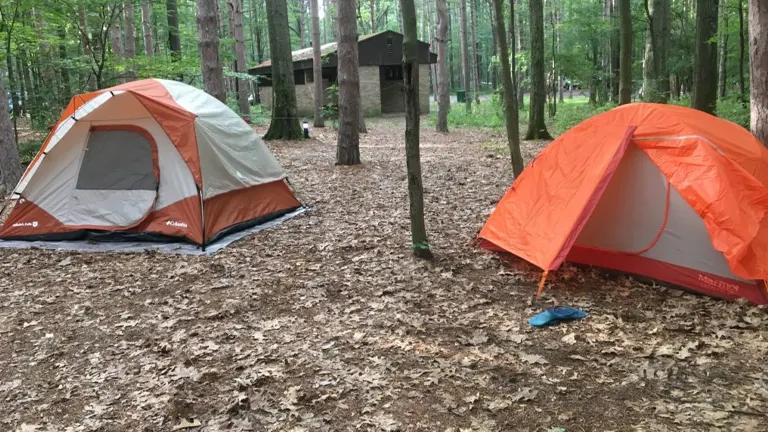
For those seeking an overnight adventure, the park provides over 275 campsites and nine cabins. Nestled within the natural beauty of the Finger Lakes region, camping at Watkins Glen allows visitors to extend their stay, immersing themselves in the tranquility of the surroundings.
3. Picnicking
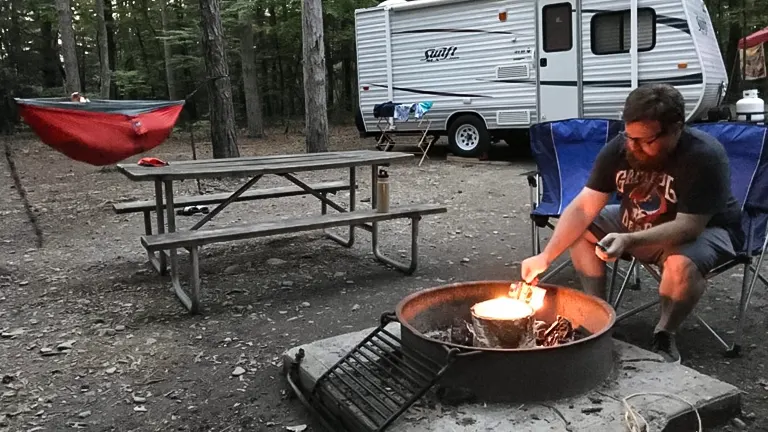
Scattered throughout the park are designated picnic areas and pavilions, offering a perfect setting for a leisurely outdoor meal. Surrounded by the park’s lush vegetation and the soothing sounds of flowing water, picnickers can enjoy a serene escape within this picturesque landscape.
4. Fishing
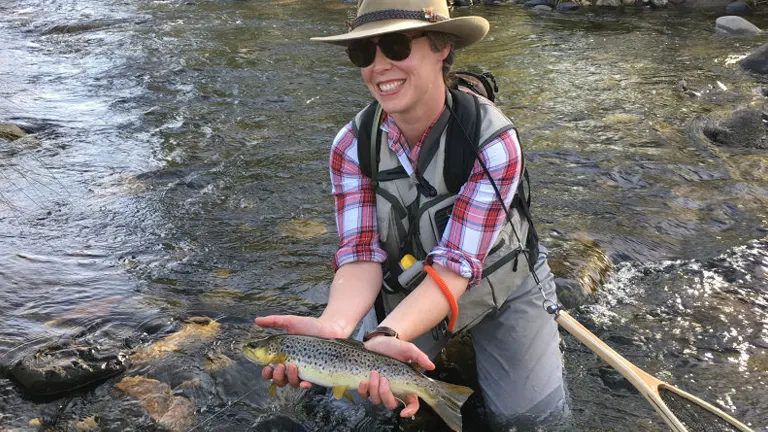
Watkins Glen State Park provides opportunities for fishing enthusiasts along the banks of Glen Creek. Anglers can try their luck in the clear waters, surrounded by the park’s natural beauty. The fishing experience here is not just about the catch but also about enjoying the serene ambiance.
5. Nature Photography
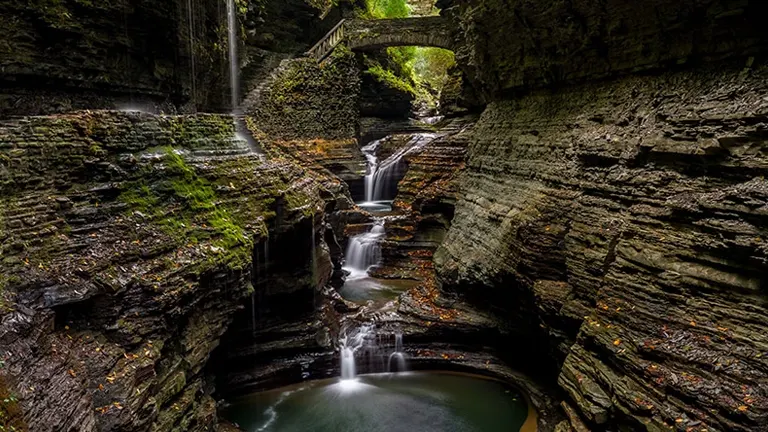
With its stunning waterfalls, unique geological formations, and diverse plant and animal life, Watkins Glen State Park is a haven for nature photographers. The play of light and shadow in the gorge, especially during sunrise or sunset, provides endless opportunities for capturing the park’s natural beauty.
6. Olympic-sized Swimming Pool
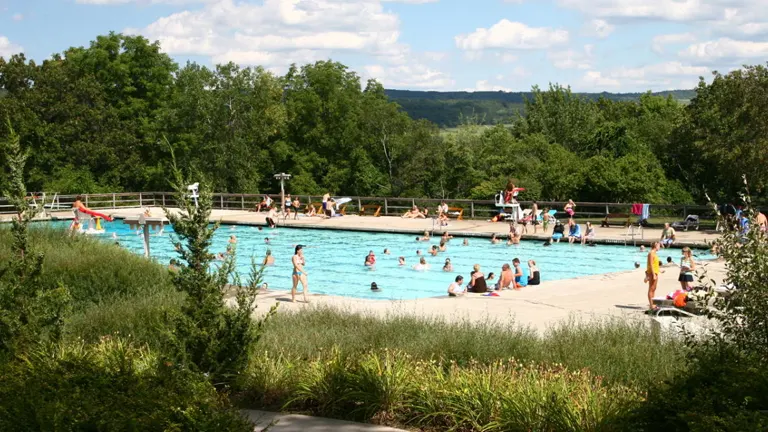
For those looking to cool off during the warmer months, the park features an Olympic-sized swimming pool. Surrounded by the lush landscape, it offers a refreshing retreat for visitors of all ages, adding a touch of recreational enjoyment to the overall park experience.
Conservation and Management
- Ecological Preservation: Watkins Glen State Park prioritizes ecological preservation through careful management of its diverse ecosystems. The park’s team works diligently to protect native plant species, mitigate the impact of invasive species, and maintain the delicate balance of habitats. Preservation efforts not only enhance the park’s biodiversity but also contribute to regional conservation initiatives.
- Trail Maintenance and Accessibility: Ensuring a balance between accessibility and environmental preservation, the park’s management places a strong emphasis on trail maintenance. Trails, such as the Gorge Trail, are carefully tended to provide safe and enjoyable experiences for visitors while minimizing ecological disturbance. Accessibility features are also incorporated to allow a wide range of visitors to appreciate the natural wonders.
- Wildlife Management: The park engages in thoughtful wildlife management practices to support the diverse fauna inhabiting its grounds. Conservation efforts focus on creating suitable habitats for threatened species, monitoring wildlife populations, and implementing measures to minimize human-wildlife conflicts. These initiatives contribute to the overall health of the park’s ecosystems.
- Educational Programs: An integral part of conservation is fostering an understanding of the park’s ecological significance. Watkins Glen State Park conducts educational programs, guided tours, and interpretive events to enlighten visitors about the delicate balance of its ecosystems. By instilling a sense of stewardship, these programs empower visitors to actively contribute to conservation efforts.
- Infrastructure Sustainability: The park’s infrastructure is designed and maintained with sustainability in mind. From energy-efficient facilities to waste reduction initiatives, Watkins Glen embraces environmentally conscious practices. This commitment to sustainability extends to facilities like the Visitor Center, which incorporates green building principles to minimize its ecological footprint.
- Collaboration with Conservation Organizations: Recognizing the interconnectedness of conservation efforts, Watkins Glen State Park collaborates with local and regional conservation organizations. These partnerships facilitate research, habitat restoration projects, and the exchange of knowledge to enhance the park’s conservation impact and contribute to broader ecological initiatives.
- Climate Resilience Strategies: Acknowledging the challenges posed by climate change, the park implements resilience strategies. This includes adapting to changing weather patterns, monitoring the impacts of climate on ecosystems, and incorporating climate-resilient landscaping practices. By addressing these challenges proactively, Watkins Glen aims to safeguard its natural treasures for future generations.
Recommendation
I highly recommend exploring Watkins Glen State Park for a captivating fusion of natural beauty and cultural significance. The park, with its varied ecosystems, iconic attractions, and recreational opportunities, offers an unmatched and immersive experience. Engage in mindful outdoor pursuits such as hiking and wildlife observation, actively contributing to the ongoing conservation efforts. The scenic trails, historic landmarks, and collaborative conservation projects make Watkins Glen State Park an essential destination for those seeking a seamless blend of nature and recreational exploration.
Conclusion
In closing, Watkins Glen State Park emerges not merely as a destination but as a living canvas of nature’s artistry, nestled within the heart of upstate New York. The deep, narrow gorge, sculpted by Glen Creek, unveils a symphony of 19 waterfalls, each contributing to an unparalleled sensory experience. As visitors traverse the well-maintained trails, they become part of a story that spans millennia, appreciating the delicate dance between rock and water. Beyond its geological marvels, the park stands as a bastion of conservation, where careful preservation efforts harmonize with recreational pursuits. From the vibrant trilliums in spring to the crimson hues of autumn, Watkins Glen weaves a seasonal tapestry that beckons exploration. This natural haven, with its camping sites, educational programs, and collaborative initiatives, invites all who enter to not just witness its grandeur but to be custodians of its enduring beauty. In Watkins Glen State Park, the timeless embrace of nature whispers to each visitor, inviting them to find solace and wonder amid its breathtaking landscapes.
Encouraging Responsible Visitation
Contemplating my experiences in Watkins Glen State Park, I am motivated to endorse thoughtful exploration. This dynamic and ever-changing environment thrives when visitors engage in mindful interaction. Whether you are an avid hiker, a photography enthusiast, or a family in search of a weekend getaway, every instance spent in Watkins Glen State Park presents a chance to play an active role in its conservation.
FAQs
- Are pets allowed in Watkins Glen State Park?
Yes, pets are allowed in designated areas of the park but must be leashed at all times. The Gorge Trail, however, is not pet-friendly to ensure the safety of all visitors. - Can I swim in the waterfalls at Watkins Glen?
No, swimming in the waterfalls is not allowed. The water currents can be unpredictable, and safety measures are in place to protect visitors. There is an Olympic-sized swimming pool in the park for recreational swimming. - Is camping allowed in Watkins Glen State Park?
Yes, camping is permitted, and the park offers over 275 campsites and nine cabins. It’s advisable to make reservations in advance, especially during peak seasons. - Are the trails wheelchair accessible?
While the Southern Rim and Indian Trails offer some accessibility, the Gorge Trail, with its numerous stone steps, is not wheelchair-friendly. Visitors with mobility concerns may explore other trails for a scenic experience. - What is the best time to visit Watkins Glen for fall foliage?
The best time to witness vibrant fall foliage is typically in mid to late October. The park’s diverse vegetation transforms into a canvas of reds, oranges, and yellows, creating a breathtaking autumn panorama. - Are there guided tours available in Watkins Glen State Park?
Yes, the park offers guided tours during certain times of the year. These tours provide in-depth information about the park’s geological features, history, and conservation efforts. - Can I fish in Watkins Glen State Park?
Yes, fishing is allowed along the banks of Glen Creek. Anglers can enjoy the serene environment while trying their luck. A valid New York State fishing license is required. - Are there educational programs for children in the park?
Absolutely, Watkins Glen State Park conducts educational programs tailored for children. These programs focus on environmental awareness, wildlife, and the importance of conservation, offering a fun and informative experience for young visitors.
As the day gently fades away, Watkins Glen State Park wraps you in its natural embrace. Whether you’ve explored the trails, enjoyed the waterfalls, or simply soaked in the peaceful surroundings, the park’s beauty leaves an indelible mark. As you step away, take with you the memories of this haven—a place where nature’s wonders invite you to return and find joy in every season. Until next time, Watkins Glen awaits, promising more moments of serenity and discovery.



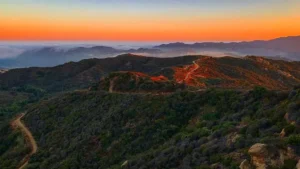
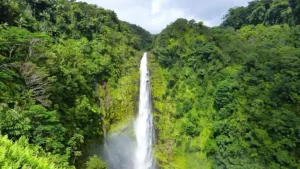

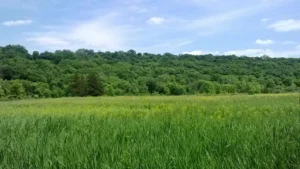
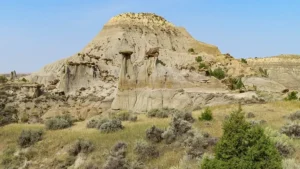
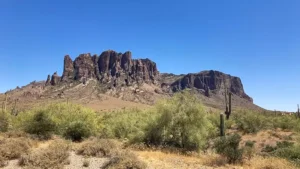
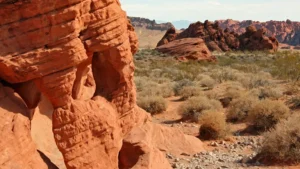
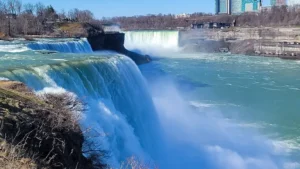


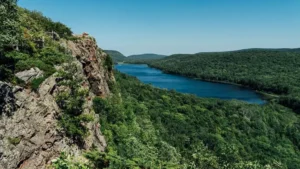
Leave your comment